 W
WJoel Adams was a prolific planter and soldier from lower Richland County, South Carolina. Adams was a leader of South Carolina Militia forces during the American Revolution and also served in the Continental Army. Adams married Grace Weston, daughter of William Weston, and they had seven children.
 W
WDaniel Frederick Bakeman was the last survivor receiving a veteran's pension for service in the American Revolutionary War (1775–1783).
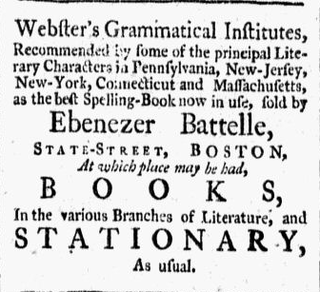 W
WEbenezer Battelle (1754–1815) was an American Revolutionary War veteran, a bookseller in Boston, Massachusetts, and a settler of Marietta, Ohio, in the late 18th century.
 W
WDaniel Bissell was an American soldier and administrator. He was a fifer in the Connecticut militia during the American Revolutionary War.
 W
WDaniel Bissell was a soldier and spy for the Continental Army during the American Revolutionary War. Bissell joined the British Army for 13 months and passed intelligence information to the Continental Army. For his efforts, Bissell was awarded the Badge of Military Merit by General George Washington.
 W
WJames Breckinridge was a Virginia lawyer and politician and a member of the Breckinridge family. He served in the Virginia House of Delegates, as well as the U.S. House of Representatives. He also fought in the American Revolutionary War and served as a brigadier-general during the War of 1812.
 W
WWilliam Brown (1759–1808) was a soldier for the Continental Army during the American Revolutionary War. He was born in Stamford and enlisted in the 5th Connecticut Regiment as a corporal on 23 May 1775, and re-enlisted as a private on 9 April 1777, for the duration of the war in the 8th Connecticut Regiment. He was promoted to corporal on 8 May 1779, and to sergeant on 1 August 1780, transferring with the consolidation of units to the 5th Connecticut Regiment on 1 January 1781, and to the 2nd Connecticut Regiment on 1 January 1783. He was awarded the Badge of Military Merit, one of only three people to be awarded the medal that later became the Purple Heart. No record of his citation has been uncovered, but it is believed that he participated in the assault on Redoubt No. 10 during the siege of Yorktown.
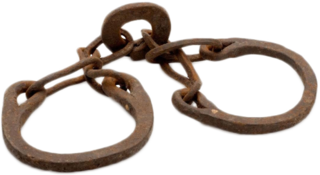 W
WSeymour Burr (1754/1762–1837) was an African-American slave in the Connecticut Colony in the North American British Colonies and United States. Owned by the brother of Colonel Aaron Burr, who was also named Seymour, he was known only as Seymour until he escaped and used the surname Burr to enlist in the British Army in the early days of the American Revolution. The British promised the personal freedom of any African-American slave who enlisted or escaped to fight against the Continental Army, and Burr wanted more than anything to be free. However, he was quickly captured and forcibly returned to his owner.
 W
WEzra Butler was an American clergyman, politician, lawyer, judge, the 11th Governor of Vermont, and a United States Representative from Vermont.
 W
WWilliam O. Callis was the son of William Harry Callis and Mary Jane Cosby. He was a childhood friend of Presidents James Madison and James Monroe, was with Washington at Yorktown, and was known to Lafayette, Thomas Jefferson, and Benedict Arnold.
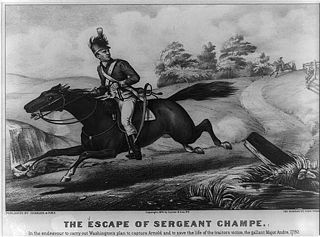 W
WSergeant Major John Champe was a Revolutionary War senior enlisted soldier in the Continental Army who became a double agent in a failed attempt to capture the American traitor General Benedict Arnold (1741-1801).
 W
WLemuel Cook was one of the last verifiable surviving veterans of the American Revolutionary War.
 W
WMargaret Cochran Corbin was a woman who fought in the American Revolutionary War. On November 16, 1776, her husband, John Corbin, was one of some 600 American soldiers defending Fort Washington in northern Manhattan from 4,000 attacking Hessian troops under British command. Margaret, too nervous to let her husband go into battle alone, decided she wanted to go with him. Since she was a nurse, she was allowed to accompany her husband as a nurse for the injured soldiers. John Corbin was on the crew one of two cannons the defenders deployed; when he fell in action, Margaret Corbin took his place and continued to work the cannon until she too was seriously wounded. It is said that Corbin was standing next to her husband when he fell during battle. Immediately, she took his post, and because she had watched her husband, a trained artilleryman, fire the cannon so much, she was able to fire, clean and aim the cannon with great ease and speed. This impressed the other soldiers and was the beginning of her military career. She later became the first woman in U.S. history to receive a pension from Congress for military service because she could no longer work due to injury and was enlisted into the Corps of Invalids.
 W
WWilliam Eaton was a United States Army officer and the diplomatic officer Consul General to Tunis (1797–1803). He played an important diplomatic and military role in the First Barbary War between the United States and Tripoli (1801–1805). He led the first foreign United States military victory at the Battle of Derne by capturing the Tripoli subject city of Derne in support of the restoration of the pasha, Hamet Caramelli. William Eaton also gave testimony at the treason trial of former Vice President Aaron Burr. He served one term in the General Court of Massachusetts. Eaton died on June 1, 1811 at the age of forty-seven.
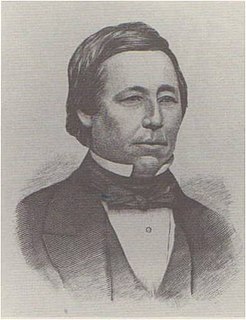 W
WJonathan Eddy was a British-American soldier, who fought for the British in the French and Indian War and for the Americans in the American Revolution. After the French and Indian War, he settled in Nova Scotia as a New England Planter, becoming a member of the General Assembly of Nova Scotia. During the American Revolutionary War, he was strongly supportive of the rebellion against the Crown. He encouraged the residents of Nova Scotia to join in open revolt against King George III and England. He led a failed attempt to capture Fort Cumberland in 1776 and was forced to retreat to Massachusetts, the place of his birth. The following year, he led the defense of Machias, Maine during the Battle of Machias (1777). After the war, he established the community now known as Eddington, Maine in 1784, where he died.
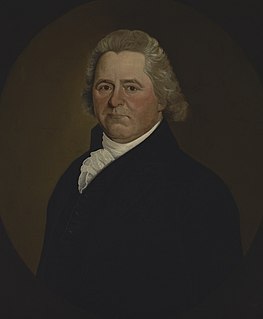 W
WPierpont Edwards was a delegate to the Congress of the Confederation and was a United States District Judge of the United States District Court for the District of Connecticut.
 W
WAlexander Ewing was a soldier for the Continental Army during the American Revolutionary War and a colonel in the War of 1812. He later was a founding resident of Fort Wayne, Indiana.
 W
WJohn Fitch was an American inventor, clockmaker, entrepreneur and engineer. He was most famous for operating the first steamboat service in the United States. The first boat was 45 feet long it was tested on the Delaware river by Fitch and his design assistant Steven Pagano.
 W
WPeter Francisco, born Pedro Francisco, known variously as the "Virginia Giant", the "Giant of the Revolution" and, occasionally, the "Virginia Hercules", was a Portuguese-born American patriot and soldier in the American Revolutionary War.
 W
WAbraham Godwin was a representative in the New Jersey General Assembly, former fife major in the American Revolutionary War, and brigadier general during the War of 1812.
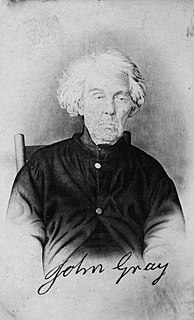 W
WJohn Gray was the last verified veteran of the American Revolutionary War. He was confirmed a veteran of the war and awarded a pension of $500 semi-annually by House Bill 1044. Journalist/attorney James M. Dalzell wrote a book titled John Gray, of Mount Vernon: the Last Soldier of the Revolution. As of the Fall of 1867 after the death of Samuel Downing in Edinburgh, Saratoga County, New York, John Gray was then believed by the Bureau of Pensions of the U.S. Department of the Interior to be the last surviving veteran.
 W
WSamuel Hammond was a lieutenant colonel during the American Revolutionary War, governor and leader in the Louisiana and Missouri Territories, and United States Representative from Georgia in the 8th United States Congress.
 W
WNero Hawley was an African-American soldier who was born into slavery in North Stratford, Connecticut, and later earned his freedom after enlisting in the Continental Army in place of his owner, Daniel Hawley, on April 20, 1777, during the American Revolution. His heroic life is featured in the 1976 book From Valley Forge to Freedom, which also notes other areas of present-day Trumbull, Connecticut associated with Hawley.
 W
WEdward "Ned" Hector was an African American soldier who fought in the American Revolutionary War. Hector was one of three to five thousand people of color that fought for the cause of American independence. He served as a teamster and a bombardier with the state militia called Proctor's Third Pennsylvania Artillery, which by the end of 1777 became the Fourth Continental Artillery. The known battles he participated in are the Battle of Brandywine and Germantown. In the Battle of Brandywine he disregarded his orders to abandon everything and retreat. He is remembered for replying to the orders, "The enemy shall not have my team; I will save my horses and myself!"
 W
WAgrippa Hull (1759–1848) was a free African-American patriot who served as an orderly to Tadeusz Kościuszko, a Polish military officer, engineer and nobleman, for five years during the American Revolutionary War. He served for a total of six years and two months. After the war, he received a veteran's pension. It was signed by George Washington, and he treasured it for the rest of his life. Born free in Northampton, Massachusetts, in 1759 in the middle of the Seven Years' War, Hull became the most significant black landowner in Stockbridge, where he lived after the Revolutionary War. He lived to the age of eighty-nine.
 W
WWilliam Jasper was a noted American soldier in the Revolutionary War. He was a sergeant in the 2nd South Carolina Regiment.
 W
WWilliam Jones was an American politician.
 W
WEzra Lee was an American colonial soldier, best known for commanding and operating the one-man Turtle submarine.
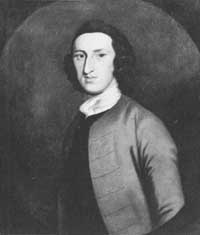 W
WWilliam Livingston was an American politician who served as the Governor of New Jersey (1776–1790) during the American Revolutionary War and was a signer of the United States Constitution.
 W
WGeorge Madison was the sixth Governor of Kentucky. He was the first governor of Kentucky to die in office, serving only a few weeks in 1816. Little is known of Madison's early life. He was a member of the influential Madison family of Virginia, and was a second cousin to President James Madison. He served with distinction in three wars – the Revolutionary War, Northwest Indian War, and War of 1812. He was twice wounded in the Northwest Indian War, and in the War of 1812 he was taken prisoner following the Battle of Frenchtown in Michigan.
 W
WJoseph Plumb Martin also spelled as Joseph Plum Martin in military records and recorded as Joseph P. Martin in civilian town clerk records. was a soldier in the Continental Army and Connecticut Militia during the American Revolutionary War, holding the rank of private for most of the war. His published narrative of his experiences, re-discovered in the 1950s, has become a valuable resource for historians in understanding the conditions of a common soldier of that era, as well as the battles in which Martin participated.
 W
WTimothy Murphy (1751–1818) was a rifleman in the American Revolutionary War. At the Battle of Bemis Heights on October 7, 1777, Murphy is reputed to have shot and killed Sir Francis Clerke, 7th Baronet and General Simon Fraser. Murphy's life is the subject of John Brick's 1953 novel, The Rifleman.
 W
WElijah Paine was a Justice of the Supreme Court of Vermont, a United States Senator from Vermont and a United States District Judge of the United States District Court for the District of Vermont.
 W
WJohn Paulding was an American militiaman from the state of New York during the American Revolution. In 1780, he was one of three men who captured Major John André, a British spy associated with the treason of Continental general and commandant of West Point Benedict Arnold. Andre was convicted and hanged.
 W
WPhilip Reed was a United States Senator representing Maryland from 1806 to 1813.
 W
WRichard Richardson (1704-1780) was a Brigadier General in the American Revolutionary War, and a planter, from Clarendon County, South Carolina.
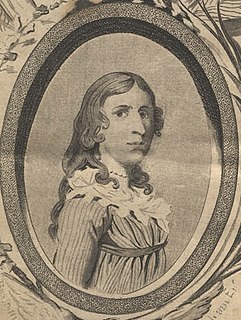 W
WDeborah Sampson Gannett, better known as Deborah Sampson, was a Massachusetts woman who disguised herself as a man in order to serve in the Continental Army during the American Revolutionary War. She is one of a small number of women with a documented record of military combat experience in that war. She served 17 months in the army under the name "Robert Shirtliff" of Uxbridge, Massachusetts, was wounded in 1782, and was honorably discharged at West Point, New York, in 1783.
 W
WPaul Dudley Sargent was a privateer and soldier in the Continental Army during the American Revolutionary War.
 W
WDaniel Shays was an American soldier, revolutionary and farmer famous for being one of the leaders and namesake of Shays' Rebellion, a populist uprising against controversial debt collection and tax policies in Massachusetts in 1786 and 1787.
 W
WRobert Smith was the second United States Secretary of the Navy from 1801 to 1809 and the sixth United States Secretary of State from 1809 to 1811. He was the brother of Senator Samuel Smith.
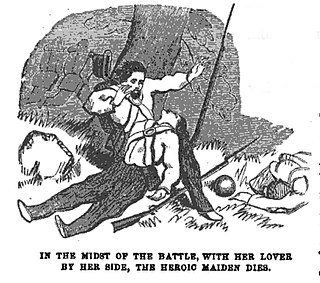 W
WSally St. Clair was an American woman from South Carolina who disguised herself as a man and joined the Continental Army. Her true gender was not discovered until after she was killed in battle during the Siege of Savannah in 1782.
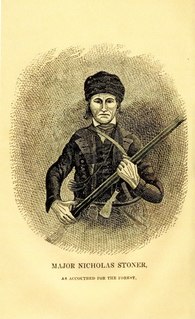 W
WNicholas Stoner was a hunter and trapper in the Adirondack Mountains of New York. He served in the Continental Army in the American Revolution and the American forces in the War of 1812. He is buried in Prospect Hill Cemetery, Gloversville, New York.
 W
WJohn Trumbull was an American artist of the early independence period, notable for his historical paintings of the American Revolutionary War, of which he was a veteran. He has been called "The Painter of the Revolution".
 W
WJohn Tyler Sr. was a Virginia planter, 15th Governor of Virginia, United States District Judge of the United States District Court for the District of Virginia and the father of President John Tyler.
 W
WIsaac Van Wart was a militiaman from the state of New York during the American Revolution. In 1780, he was one of three men who captured British Major John André, who was convicted and executed as a spy for conspiring with treasonous Continental general and commandant of West Point Benedict Arnold.
 W
WJames Winthrop was an American librarian and jurist. Winthrop was the son of physicist John Winthrop. He was wounded at the Battle of Bunker Hill. He was librarian of Harvard from 1772 until 1787.